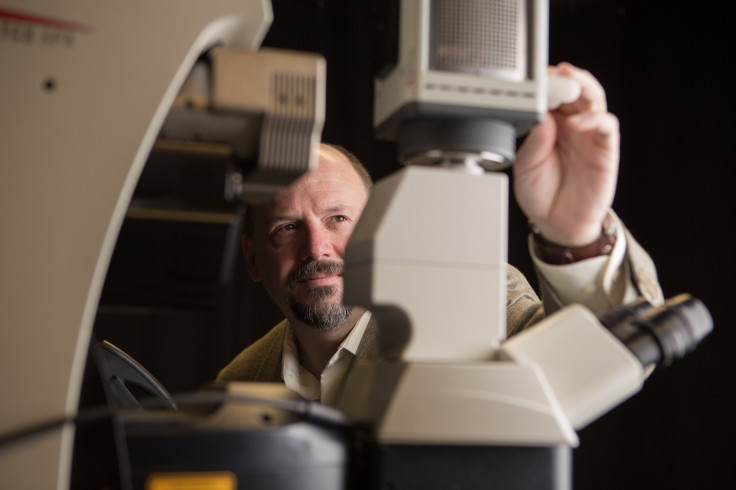How Are Memories Formed? Fruit Flies May Hold The Answer To Future Dementia Treatments

Although it is known that memory is central to our sense of self and to our daily function, what remains unknown is how individual memories form. Researchers at the University of Houston (UH) have begun to unravel the answer to this question by investigating the brain activity involved in Pavlovian conditioning. Their work may inspire treatments that could improve memory for patients with dementia, which currently affects up to 5.3 million Americans.
“To a large degree, we are the sum of our experiences,” Gregg Roman, an associate professor of biology and biochemistry at UH, stated in a press release. “When memories can no longer be retrieved or we have difficulty in forming new memories, the effects are frequently tragic. In the future, our work will enable us to have a better understanding of how human memories form.”
Experiments with Fruit Flies
Working with Shixing Zhang, a postdoctoral associate, Roman began a study of memory by looking deep inside the tiny brains of fruit flies (Drosophila). The reason the researchers focused on fruit flies is that, although their brain structure is much simpler, with far fewer neurons than a human brain, the mushroom body is analogous to the peripheral cortex in humans, which serves the same function of sensory integration and learning. Similarity combined with greater simplicity, then, allows the researchers to experiment on the flies and gain insights into how memories are acquired, stored, and retrieved.
In this particular experiment, Roman and Zhang focused on nerve cells within the fly brain that play a role in memory and aid olfactory learning. This type of learning was the basis for Pavlov’s famous experiment with dogs. In the experiment, Pavlov trained a set of dogs by sounding a buzzer each time he presented food; in response to the food, the dogs would salivate; after a number of trials, when Pavlov sounded the buzzer (the stimulus), the dogs would salivate (a conditioned reflex), even though food was not present. Expanding on Pavlov’s work, the UH researchers trained fruit flies to associate a particular odor with a weak electric shock. Soon enough, the flies began to avoid that odor.
"We found that these particular nerve cells — the gamma lobe neurons of the mushroom bodies in the insect brain — are activated by odors,” Roman explained in the press release. “Training the flies to associate [one] odor with an electric shock changed how these cells responded to [all] odors by developing a modification in gamma lobe neuron activity, known as a memory trace.” Investigating the memory trace, the researchers discovered more about the brain’s activity during the learning process.
The Bond of Memory and Learning
Specifically, the research team discovered that after training, odors that had not been paired to an electric shock weakly activated the gamma lobe neurons, while the odor paired with the electric shock strongly activated these neurons. The gamma lobe neurons had a stronger response to the trained odor than to the untrained odor. The team also found evidence that one specific protein — the heterotrimeric G(o) protein — is involved in inhibiting gamma lobe neurons. After the researchers removed the activity of this protein within the gamma lobe neurons, memory trace was lost, and in turn this led to poor learning ability. Therefore, inhibiting the release of neurotransmitters from these neurons through the actions of the G(o) protein is key to forming the memory trace and associative memories.
The pair of researchers believe the molecules (as well as the logic) of their experiment should translate to most animals, including humans, and will lead to a more complete understanding of how human memories form — both on the level of molecules and neural circuits. The fruit fly's simplicity functions as the perfect model: the researchers are able to identify which molecules are necessary to perform specific behaviors, while they dissect the logic of the neural circuits that allow for changes in behavior to occur. Next, they are able to trace this back to the specific fruit fly genes at work and finally, they make a comparison to human biology in order to determine if there is a similar genetic foundation.
"Drosophila represents the Goldilocks principle of neural research, with sufficient behavioral complexity, while maintaining a huge advantage in neural simplicity," Roman explained. "The complex behaviors allow us to examine many behavioral processes like learning, attention, aggression, and addiction-like behaviors, while the simplicity allows us to dissect the crucial neural activities down to single cells.” Not bad for a mere fly!
Source: Roman G, Zhang S. Presynaptic Inhibition of Gamma Lobe Neurons Is Required for Olfactory Learning in Drosophila. Current Biology. 2013.



























